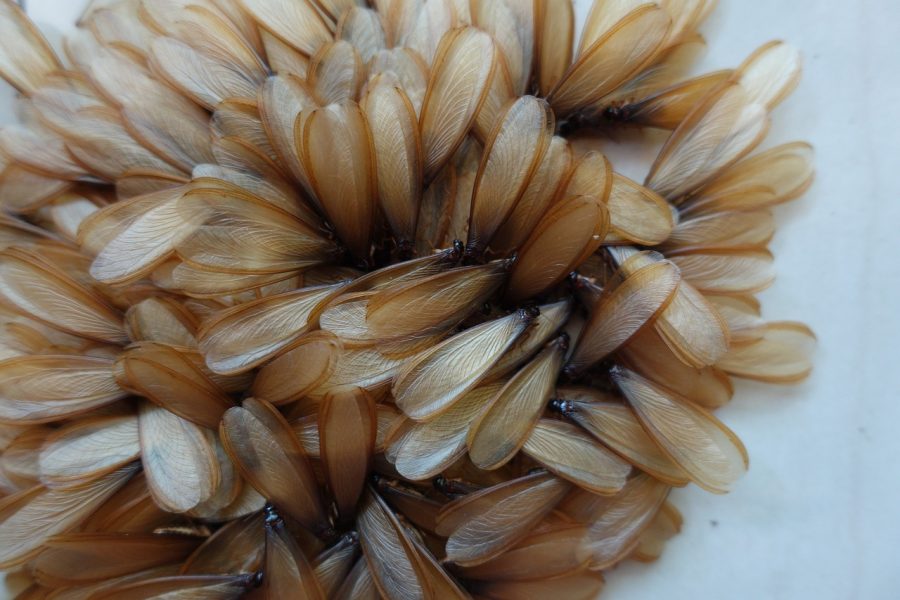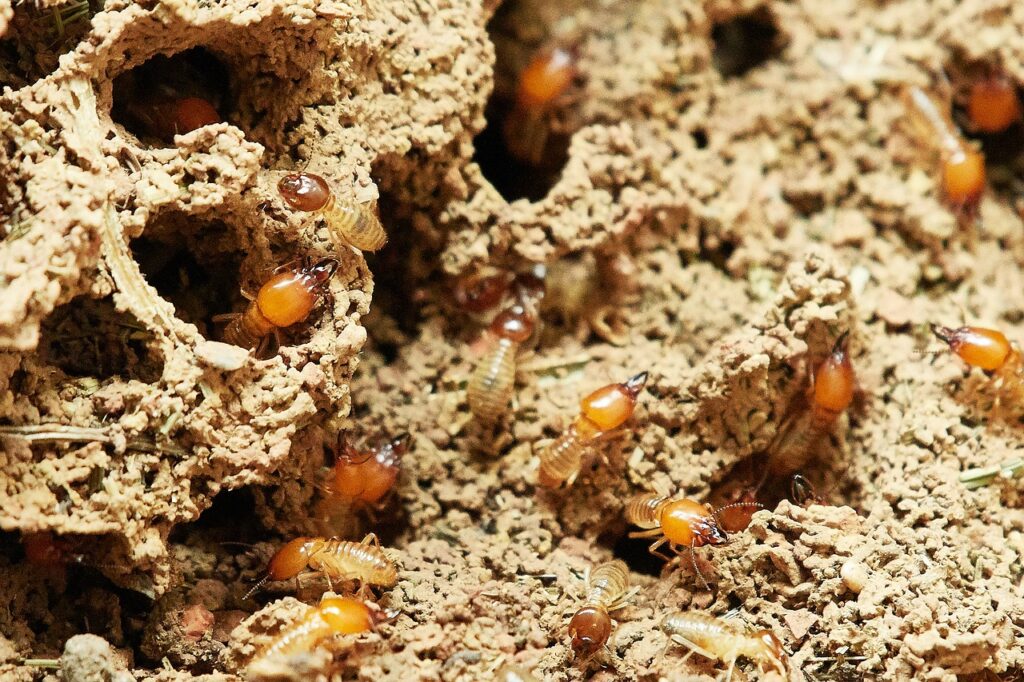
Did you know that one yard can contain thousands of termites? And what’s worse is that they live underground in most cases, so you never even see them until it is too late. Learning about the termites in Virginia will help homeowners know what to look for not to be caught off guard.
PestWorld.org says it best:
“Termites are known as “silent destroyers” because of their ability to chew through wood, flooring, and even wallpaper undetected. As a result of their stealth nature, termites cause $5 billion in property damage each year. Damage, which is typically not covered by homeowners’ insurance.”
Keeping termites out of your home is a critical part of your home’s pest solutions. There are different types of termites, all needing treatment specific to type and location. Join the experts at James River Pest Solutions as we learn more about termites in Virginia, the damage they can do, and how to prevent termite infestations.
The Termites in Virginia
Termites in Virginia are an all-year issue, and our climate is perfect for them to thrive. There are over 2.000 types of termites in the world, and 40 in the United States. But, really only three types are prevalent and especially in Virginia. They are as follows.
- Subterranean termites
- Formosan termites
- Dry wood termites

Subterranean Termites
Subterranean termites form colonies in raw land and nest in the ground. To survive, they need moisture, soil, and darkness. Like all termites, they live in a caste system. The colony is ruled by the queen, but she is seldom ever seen by homeowners.
- The Workers are a one-centimeter, soft, white-bodied termite with no eyes.
- Subterranean Soldiers are similar but have an amber color and a larger head.
- And the Swarmers are termites with equal-sized wings and darker bodies and are the winged reproductive members.
Subterranean termites make the mud tubes visible where there is an infestation. Unfortunately, they do the majority of the damage to Virginia homes.
Formosan Termites
Formosan termites are very aggressive as they chew their way through all sorts of wood and various other substances. Their colonies expand rapidly through underground tunnels, which makes them able to do a lot of damage in a short amount of time. And, Formosan termites do not have to remain under the ground so that they can cover more area than subterranean varieties.
- The Workers are white to off-white bodied termites.
- Soldiers are similar but have an orangish-brown head and pale, whitish bodies.
- And the Swarmers are termites with equal-sized wings and light yellowish bodies.
Dry Wood Termites
Dry Wood termites are fortunate because they need very little moisture to survive, and they nest in the same wood they are invading. While they are not as prevalent in Virginia, they can come in through the furniture and other items. They exist in much smaller colonies than Formosan and Subterranean termites. They also have swarmers that will leave wings on the sills in the Spring and Summer. If they get into a piece of furniture, for instance, they will hollow the entire leg out and leave only the shell.
- Workers are soft and pale whitish to cream-colored.
- The Soldiers have dark orangish-brown heads and opaque bodies.
- And the Swarmers are termites with gray wings, amber heads, and yellow to brown bodies.
How To Know if You Have Termites
So, if you cannot see them, how do you know if you have termites in your home? There are a few telltale signs you can identify. If you see any of the following signs, call your local pest solutions company to inspect before the infestation gets out of hand.
- The first sign is often discarded wings on an exterior windowsill.
- Damaged wood is another sign.
- Foraging tubes in the drywall are a sure sign of infestation.
- If you see termite droppings, which look like small, ridged, wood-colored pellets, have an inspector check it out.
- Mud tubes on the exterior surface of the home can be termites.
We know some of these signs are difficult to detect. That is why we recommend regular inspection by a pest control professional.
The Damage Termites in Virginia Can Do
“Termites cause more damage each year in the US than all-natural disasters combined. “
You may not have known this, but the termites’ job in nature is to dispose of fallen trees, recycling them, and keeping the forests healthy. So, yes, even termites have a place in this world, just not in the walls of your home.
When termites try to compost the wood in your house, they will destroy wooden studs, rafters, framing, and all sorts of other home stability products. Other substances they can chew through include concrete, plastic, pressure-treated lumber, plywood, particleboard, painted wood, sheetrock, drywall, baseboard trim, crown molding, cabinetry, cardboard, cloth, furniture, books, stored items, and more.
And how they destroy your home depends on the type of termite and their habits.
Preventing Termite Infestations
It is a fact; insurance plans do not cover termite problems. You see, they view it as a “preventable” disaster. Homeowners will want to ensure they have taken all necessary precautions to avoid getting termites in the first place. That is why it is critical all homes have an annual termite inspection and a treatment plan.
Then, you can take proactive measures to help your pest solutions company keep the termites out. Here is what James River Pest Solutions suggests for preventing termites from ever getting in your home.
- During any construction, keep the soil around the foundation dry through proper grading and drainage.
- Store firewood at least 20 feet away from your home or any structure you want to protect.
- Ensure trees and shrubs are not planted too close to the house and keep an open space of at least 6 inches from the bottom of the exterior wall to the mulch line.
- Try to eliminate all moisture in your home by repairing water pipes, faucets, and leaking external AC units.
- Repair any roof damage, including the fascia, soffits, gutters, and damaged shingles.
- Inspect and repair window and foundation weather stripping.
- Keep exterior vents free from blockage, including plants.
- Divert gutter, downspout, and splash block water away from the house and make sure they remain unclogged.
Finally, schedule regular pest control maintenance to check for early signs of termites in Virginia.

James River Pest Solutions for Termite Control
So that you are aware, let’s get this out in the open right away. DIY termite control doesn’t work with termites because you cannot see inside the wood to know if it is working or not. And many store-bought termite control products contain dangerous chemicals that can pose a threat to your family and your pets.
At James River, we know just what to look for and how to treat termites. Our team will provide a thorough inspection at no cost. In addition to looking for signs of termites, we will also inform you of conditions in the home attracting the termites.
James River Pest Solutions will offer you customized treatment options to eliminate the termites affecting your structure if any activity is found. Then, suppose there are no signs of termites. In that case, you may want to consider a preventative treatment to ensure termites never get the chance to start devouring your home.
James River is more than happy to perform your free pest solution inspection and get you on the way to a pest and termite-free home.
Contact our friendly team to get on the schedule and protect your home today.